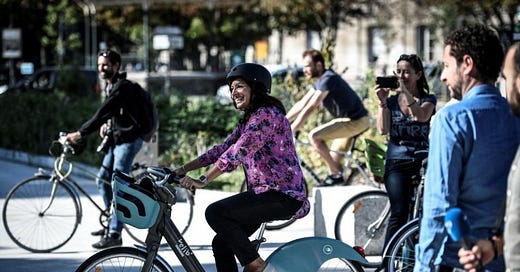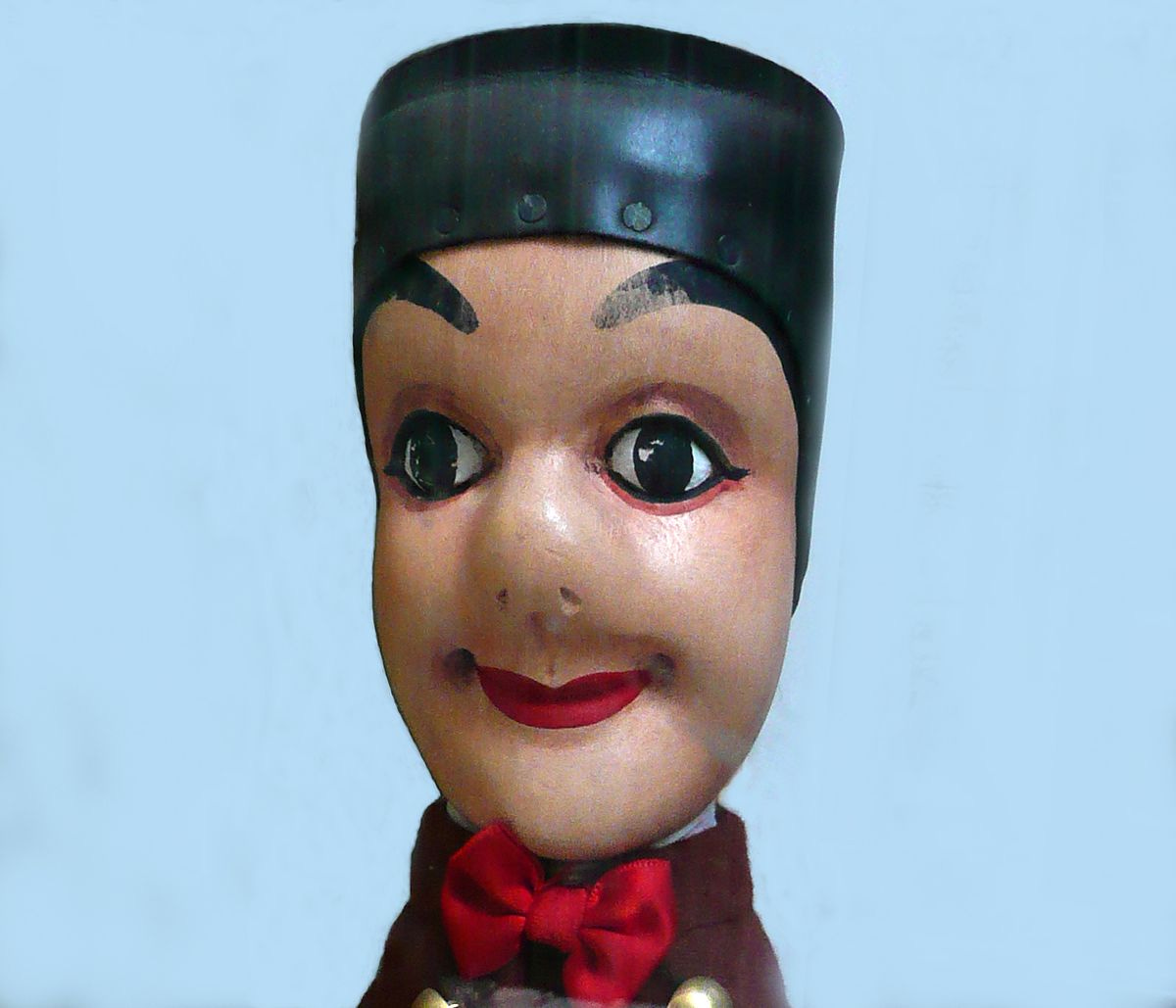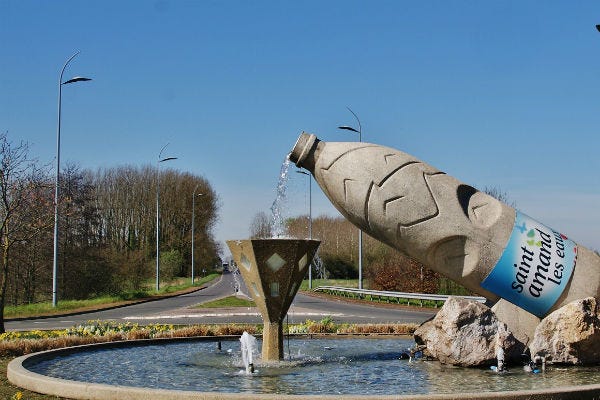The French Left in the time of monsters: Anne Hidalgo and the decline of the Socialist Party
Why is Anne Hidalgo's presidential campaign going nowhere?
Anne Hidalgo, the mayor of Paris and the official candidate of the Socialist Party, gave a high profile TV and radio interview on Sunday. In it she called Éric Zemmour a “guignol” — That was the main sound-bite, or “petite phrase” in French political parlance, the one thing people will remember of more than one hour of questions and answers.
Guignol is strong language, and rather unusual from a presidential candidate. Le Figaro newspaper, which co-hosted the interview, was outraged. While Le Figaro readers, the grand bourgeois and the business types, have a soft spot for Zemmour (he was a regular reporter and columnist for the conservative daily) the journalists may have interpreted Hidalgo's insult as an attack on their paper.
Guignol is the facetious and sharp-witted protagonist in traditional children's puppet theater. By extension, faire le guignol means to act up (a favorite put-down of all French schoolteachers.) Calling an adult a guignol is akin to calling them a showboating idiot or a joke. It's something you would say of a ridiculous and annoying celebrity, for instance a football player or a football coach (by all accounts Raymond Domenech, the former manager of the French national team, was definitely a guignol.) You would not normally say that of a political opponent.
With this jarring insult Anne Hidalgo has broken through the chatter at long last. She was indignant and exasperated that the media would be hanging on Zemmour's every word and every stunt. Amazingly, she also called him a “négationniste,” a Holocaust denier, and that flew by as if the journos on the set tacitly agreed. Zemmour's unhinged and bilious historical revisionism is well-known, probably even more so among his colleagues, and a sort of hedonic habituation has set in. Nobody bats an eye anymore.
The problem for Hidalgo is twofold : on the one hand, the Zemmour circus is sucking all the air out of the campaign, “flooding the zone with shit” as Steve Bannon once described the tactic with his notorious elegance. On the other hand, despite her comfortable reelection as Paris mayor last year, Hidalgo is a candidate without a constituency (she is currently hovering at around 6% in the polls). If she is to be a viable contender she must bring back home her vanished supporters. And in order to even begin to do that, she must somehow pull the spotlight back onto her. It was never supposed to be that way, at least in her original calculation. But here we are.
On paper her candidacy seemed not only legitimate but also full of promises. She is a popular mayor and has managed to aggregate behind her the broad spectrum of the Parisian Left, from the Communist Party and Mélenchon’s La France Insoumise to the Socialist Party and the Greens. It is a fractious coalition but it is holding strong and doing good things for Paris. Her plan (or hope) was to use her municipal success as a springboard to rekindle Lionel Jospin’s 1990s “gauche plurielle” (“plural Left”) and eke past the other candidates to compete in the runoff against the centrist Macron.

The difference between now and Jospin’s time is that the Socialist Party is no longer the dominant power on the Left. In fact, the Socialist Party has been hollowed out, along with its voters. Several Socialist Party caciques — or éléphants, as they are known — rallied behind Macron in 2017. People like Lyon mayor Gérard Collomb and Brittany party boss Jean-Yves Le Drian threw in their weight and their organizational know-how to support the young and strapping finance minister. A large chunk of the party followed in a mass exodus. La République En Marche, Macron’s electoral cartel, realized the old dream of a union between the reformist Left and the Christian Democrat center. This had been attempted as early as the presidential election of 1965, when the SFIO and the MRP had negotiated to field a single candidate and form a large “democratic” party, à l’Américaine. To no avail. Instead, after his surprising second place against De Gaulle in 1965, Mitterrand took over the moribund SFIO and made the strategic decision to veer left because that was where the bulk of the votes were. Jospin’s gauche plurielle still relied on Mitterrand’s coalition of workers, employees, State fonctionnaires and urban elites, with the Socialist Party as its center of gravity. Jospin was not a doctrinaire. He governed as a stalwart and shrewd progressive: his most enduring legacy is undoubtedly the 35 hours-workweek law which is still in force today. People love the “trente-cinq heures,” and in particular the urban, educated classes. It allows them to enjoy more time with their families, longer weekends and vacations. The right wing is still aghast that the French don’t want to make more money for themselves or for their bosses.
Today, that old alliance between the working class, or parts of it, and the Brahmin Left (as Thomas Piketty calls it) has been liquidated. The educated, urban elites who used to support the Socialist Party joined Macron, who is almost like the lab-grown homunculus of their ideal scion: academically meritorious, politically moderate, fiscally responsible, a fin lettré with worldly ambitions. On Paris’ Left Bank where I grew up, parents and professors all expected us to become achievers like Macron (except of course for his love affair and marriage with his high-school drama teacher — that’s too weird, even for the soixante-huitards.) There’s an old saying for these folks: “le coeur à gauche, le portefeuille à droite” (heart on the Left, wallet on the Right). A lot of them would hate to fall into that category out of a genuine, if residual, care for the plight of the working class. But at the same time they consider themselves the managers of the country, which they more or less are. As a result, they do not see a major difference between Emmanuel Macron and Anne Hidalgo, because there is none in practice. Proof is that they voted for Hidalgo and her allies in the last municipal elections over the LREM candidate, a very accomplished and competent woman had no way to distinguish herself from the very accomplished and competent Socialist incumbent.
This stems from the fact that the reformist Left in France has fulfilled its historical mission.
In the last 100 years it succeeded in leveraging the State’s apparatus to raise a vast, prosperous and educated urban middle class. It did its work of modernization as a governing force, from Léon Blum and Pierre Mendès-France to Mitterrand, Rocard and Jospin. And it did it as the opposition as well, constantly pushing for the expansion of the welfare State. As Piketty noted in his most recent opus, the material fortunes and political interests of the urban middle class diverged from those of their working class parents, as a consequence of the Left's success.
At this juncture, these urban middle class voters are sorting themselves further between the ecologists, Macron, and a Socialist Party reduced to mere electoral machine. It is certainly on the Left, although more by virtue of institutional memory than anything else. One would be hard-pressed to find out what “Left” means to the Socialist Party today, what they propose, what is their vision of the future. They pay lip service to the “acquis sociaux” (the social benefits) past Socialist governments enacted, they are generically pro-Europe and pro-green policies and they manage the various cities and regional jurisdictions they win with the professionalism of professional politicians.
Conversely, the people who did not catch the tide of the Trente Glorieuses and globalization, dwindling peasants and factory workers, private sector employees, youth from immigrant backgrounds, no longer see the Socialist Party as a standard bearer for their aspirations, precisely because the Socialist Party no longer represents their interests. Some vote for Le Pen, others for Mélenchon’s La France Insoumise, others shun electoral politics altogether and demonstrate at rural roundabouts wearing yellow emergency vests.
Gramsci once observed: “the old world is dying, and the new world struggles to be born: now is the time of monsters.” (It is an overwrought English translation of a bad French translation of the original Italian, but it’ll do.) The French Left is mired in that moment of transition. The reformist wing of the Left has splintered between the Greens and managerial market liberalism. The more populist wing, la gauche de la gauche as we call it, wants to continue the secular task of uplifting the working class, which it sees as incomplete, if not failed — the adverse outcome of globalization. The Left seeks to reinvent its role as the compass and as the agent of social progress. Beyond honorable laws such as same-sex marriage, it cannot agree on what progress means in the coming decades. Forging an ideological synthesis and formulating a plan of action is made particularly difficult in a context where global warming requires immediate and difficult economic transformations, and while the outworn furies of ethno-nationalism are tearing through Western democracies.
Understandably, as she explained in Sunday’s interview, Anne Hidalgo does not have a program just yet.
À la prochaine - M.
Today’s song is one of my all-time favorites: Bernard Lavilliers’ 1976 Les Barbares. He sings of his youth in Saint-Étienne as a steelworker and a Communist militant. Give it a listen, it’s remarkable, especially that stanza (which speaks to a lot of French people):
Bourgeois adolescents aux mythes ouvriers
Militants acharnés de ce rêve qui bouge
Qui serez un beau jour de gauche ou bien rangés
Tricolores et tranquilles, la zone c'était rouge!






